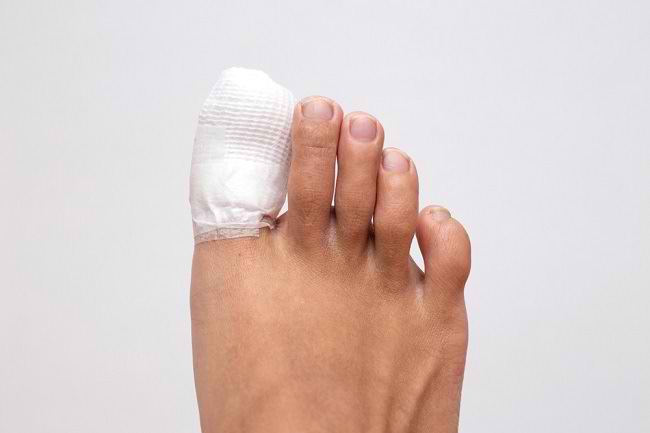Here's How To Treat Ingrown Toenails
Ingrown toenails are usually painful and require proper treatment. How to treat ingrown toenails can be done with home treatments to relieve the symptoms that appear, or with nail removal surgery performed by a doctor if the condition of the ingrown toenail is severe.
Ingrown toenails occur when the tip of the nail or the side of the nail grows into the skin of the toes. This condition is generally accompanied by several symptoms, such as pain, swelling, and fluid buildup in the skin adjacent to the toenail. These symptoms can worsen if an ingrown toenail is not treated.
There are various things that can cause ingrown toenails, including:
- Cutting nails too short
- Wear tight shoes
- Injured the corner of the nail
- Suffering from diabetes and obesity
- Does a lot of running
Based on the severity of ingrown toenails, how to treat ingrown toenails can be done with home care or direct treatment by a doctor.
How to Treat Ingrown Nails at Home
The doctor will usually recommend home treatment if the ingrown toenail is not infected. This ingrown toenail treatment at home aims to prevent infection and relieve pain that appears.Here's how to treat ingrown toenails at home:
- Soak feet in warm water for 15-20 minutes, 3-4 times a day, to soften the skin around the toes.
- Keep your feet dry all day long.
- Wear shoes that are comfortable and have enough space for your toes.
- Consider wearing sandals until the ingrown toenail heals.
- Take acetaminophen or ibuprofen for pain relief.
- Apply topical antibiotics, such as polymyxin and neomycin, to prevent infection.
While treating ingrown toenails at home, it is recommended not to cut your own toenails. This is because cutting nails can cause ingrown toenails to get worse
How to Treat Ingrown Nails by Doctor
If home treatments don't show any improvement or instead cause an infection in the ingrown toenail, it is advisable to go to the doctor to get the appropriate treatment. An ingrown toenail infection can be characterized by the formation of pus and the skin feels warm and red
Here's how to treat ingrown toenails by a doctor:
Partial nail removal
The doctor will usually perform surgery to remove part of the nail if the ingrown toenail is infected. Before the removal of part of the nail that grows into the skin, the doctor will give an injection of local anesthetic so that the patient does not feel pain during the operation.This procedure is known to be effective in preventing ingrown toenails from returning in the future. Nails will grow back within 2–4 months after surgery.
Surgical removal of the entire nail and its tissues
If the ingrown toenail occurs repeatedly on the same toe, the doctor will perform an operation to remove the entire nail and the underlying tissue. In addition, this procedure is also performed if the cause of an ingrown toenail is thickening of the nail.
After surgery to remove the entire nail and its tissue, it can take more than a year for the nail to grow back.
If the toe is swollen or painful after surgery, it is recommended to take pain relievers and apply cold water compresses for a few minutes. Also, keep your toes higher than your body for 12–24 hours and avoid activities that could trigger injury to your toes.
To prevent repeated ingrown toenails, there are several ways you can do, including:
- Don't cut your nails too short.
- Avoid wearing tight shoes.
- Keep your feet clean and dry.
If you have an ingrown toenail, you can take some home care steps to prevent infection. However, for people with diabetes, how to treat ingrown toenails must be done directly by a doctor so as not to cause severe complications, such as nerve damage.
If you suffer from an ingrown toenail accompanied by fever, chills, and the formation of pus on the ingrown toenail, don't hesitate to go to the doctor for appropriate treatment.
Label : Healthy living
Comments
Post a Comment